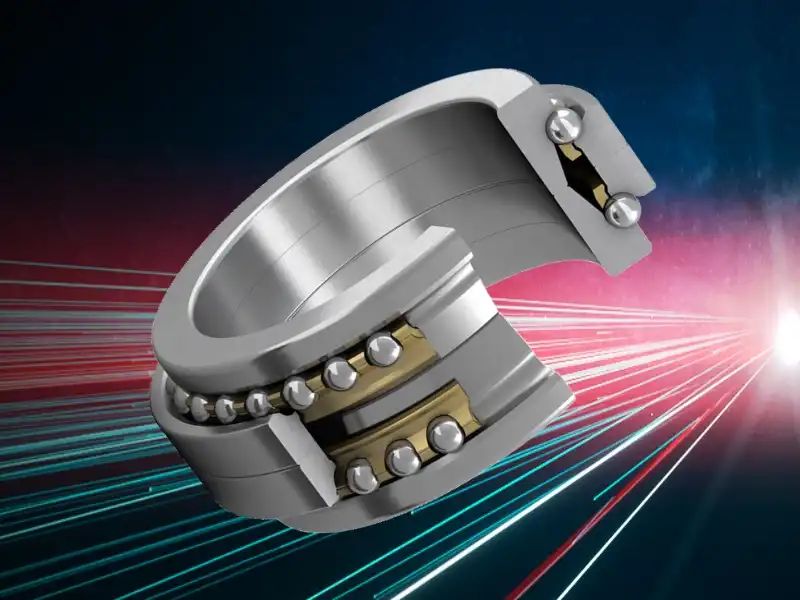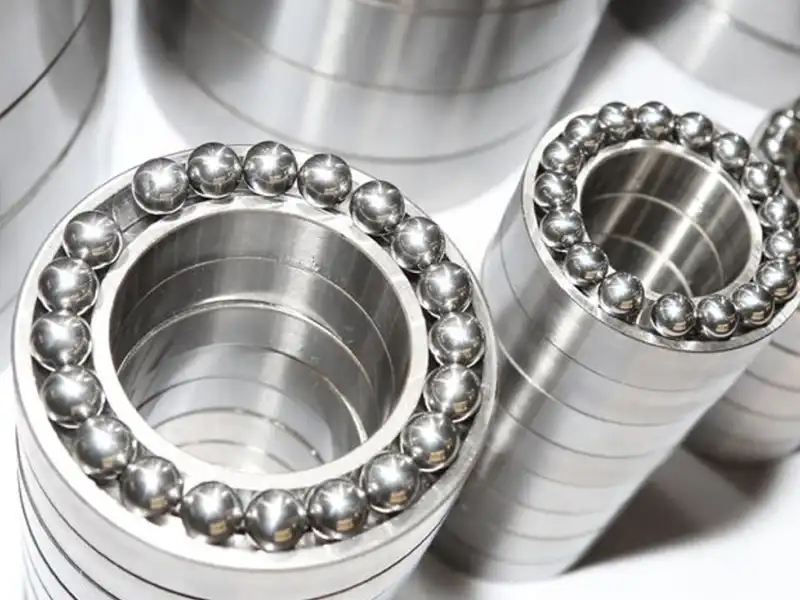What is the Typical Size Range for Angular Contact Thrust Ball Bearings?
Angular Contact Thrust Ball Bearings represent a crucial component in modern machinery, featuring specialized designs to handle both axial and radial loads simultaneously. These bearings typically come in various sizes, ranging from miniature precision bearings measuring just a few millimeters in bore diameter to large industrial variants exceeding 500 millimeters. The size selection depends primarily on the application requirements, load conditions, and speed specifications of the machinery in which they are implemented. Understanding the typical size range is essential for engineers and maintenance professionals to make informed decisions about bearing selection and application.

How do Angular Contact Thrust Ball Bearings differ from regular ball bearings?
Angular contact thrust ball bearings possess distinct characteristics that set them apart from conventional ball bearings. The primary difference lies in their unique contact angle design, which enables them to handle combined loads more effectively. These bearings feature raceways that are displaced relative to each other in the direction of the bearing axis, creating an angle between the line of action of the ball and bearing axis. This design allows for higher axial loads in one direction and moderate radial loads, making them ideal for applications requiring precise shaft guidance and high rotational accuracy.
The contact angle, typically ranging between 15 and 40 degrees, plays a crucial role in determining the bearing's performance characteristics. Higher contact angles provide increased axial load capacity but reduced radial load capacity, while lower contact angles offer a more balanced load distribution. The bearing's internal geometry is precisely engineered to maintain optimal ball-to-raceway contact under various operating conditions, ensuring smooth operation and extended service life.
Furthermore, these bearings often incorporate special cage designs and superior materials compared to regular ball bearings. The cage design ensures proper ball spacing and guidance, while high-grade materials such as chrome steel or ceramic contribute to enhanced durability and performance under demanding conditions. Modern manufacturing techniques allow for extremely tight tolerances and superior surface finishes, resulting in reduced friction and improved running accuracy compared to standard ball bearings.
These specialized bearings also incorporate advanced sealing solutions that protect against contamination and retain lubricant more effectively than conventional designs. The sealing arrangements can be customized based on the operating environment, with options ranging from non-contact shields for high-speed applications to contact seals for harsh conditions. This versatility in design makes them suitable for a wide range of industrial applications while maintaining superior performance characteristics.
What factors influence the selection of Angular Contact Thrust Ball Bearing sizes?

The selection of appropriate bearing sizes involves careful consideration of multiple technical and operational factors. Load capacity serves as a primary consideration, with both dynamic and static load ratings playing crucial roles. The dynamic load rating indicates the bearing's ability to operate reliably under varying loads over time, while the static load rating represents the maximum load the Angular Contact Thrust Ball Bearing can withstand without permanent deformation.
Operating speed requirements significantly impact size selection, as different sizes exhibit varying speed limitations based on their mass and internal geometry. Larger bearings generally have lower speed capabilities due to increased centrifugal forces and heat generation, while smaller bearings can operate at higher speeds but with reduced load capacity. The application's specific speed requirements must be balanced against the bearing's DN value (bore diameter in mm multiplied by speed in rpm) to ensure optimal performance.
Installation space constraints and shaft diameter requirements often dictate the bearing's outer dimensions and bore size. Engineers must consider the available mounting space while ensuring the bearing's load capacity meets application demands. Additionally, lubrication requirements, operating temperature range, and environmental conditions influence size selection, as these factors affect the bearing's performance and maintenance needs.
The bearing's precision class and internal clearance requirements also play significant roles in size selection. Higher precision classes are typically available in smaller size ranges, making them suitable for precision machinery applications. Internal clearance considerations become increasingly important with larger bearing sizes, as thermal expansion and operating conditions can significantly impact bearing performance and reliability.
What are the common applications and mounting considerations for different bearing sizes?

Angular contact thrust ball bearings find extensive applications across various industries, with size requirements varying significantly based on the specific application. In precision machinery, such as machine tool spindles, smaller bearings with bore diameters ranging from 10mm to 100mm are commonly used due to their high accuracy and ability to maintain precise shaft positioning. These applications often require preloaded bearing arrangements to eliminate axial play and ensure maximum rigidity.
Industrial applications, including pumps, compressors, and gearboxes, typically utilize medium to large-sized bearings with bore diameters from 50mm to 300mm. These applications demand robust bearing designs capable of handling substantial loads while maintaining reliable operation over extended periods. Mounting considerations become increasingly critical with larger bearing sizes, requiring careful attention to shaft and housing fits, alignment procedures, and proper lubrication systems.
Specialized applications, such as wind turbine gearboxes and heavy industrial equipment, may require extra-large bearings exceeding 300mm in bore diameter. These installations demand particular attention to mounting procedures, including proper handling equipment, heating methods for installation, and specialized tools for maintenance. The mounting arrangement must account for thermal expansion, shaft deflection, and load distribution to ensure optimal bearing performance and longevity.
The mounting process itself requires precise attention to detail, regardless of bearing size. Proper alignment tools, heating equipment, and mounting procedures must be followed to ensure optimal bearing performance. For larger bearings, specialized mounting tools and techniques may be necessary to handle the increased weight and size. Additionally, the mounting surface preparation and cleanliness become increasingly critical as bearing size increases, as any misalignment or contamination can significantly impact Angular Contact Thrust Ball Bearing life and performance.
Luoyang Huigong Bearing Technology Co., Ltd. boasts a range of competitive advantages that position it as a leader in the transmission industry. Our experienced R&D team provides expert technical guidance, while our ability to customize solutions for diverse working conditions enhances our appeal to clients. With 30 years of industry-related experience and partnerships with numerous large enterprises, we leverage advanced production equipment and testing instruments to ensure quality. Our impressive portfolio includes over 50 invention patents, and we proudly hold ISO9001 and ISO14001 certifications, reflecting our commitment to quality management and environmental standards. Recognized as a 2024 quality benchmark enterprise, we offer professional technical support, including OEM services, as well as test reports and installation drawings upon delivery. Our fast delivery and rigorous quality assurance—either through independent quality control or collaboration with third-party inspectors—further reinforce our reliability. With many successful collaborations domestically and internationally, we invite you to learn more about our products by contacting CHG at sale@chg-bearing.com or calling our hotline at +86-0379-65793878.
References:
1. SKF Bearing Selection Guide (2024 Edition)
2. NSK Technical Report: Angular Contact Ball Bearings
3. Timken Engineering Manual: Thrust Bearing Applications
4. Journal of Mechanical Engineering: Advances in Bearing Technology
5. International Journal of Mechanical Sciences: Bearing Load Analysis
6. Machine Design Handbook: Rolling Element Bearings
7. Industrial Bearing Maintenance Guide by NTN
8. ABMA Technical Standards for Ball Bearings
9. FAG Bearing Installation Manual
10. Applied Tribology: Bearing Design in Machinery (2023)

